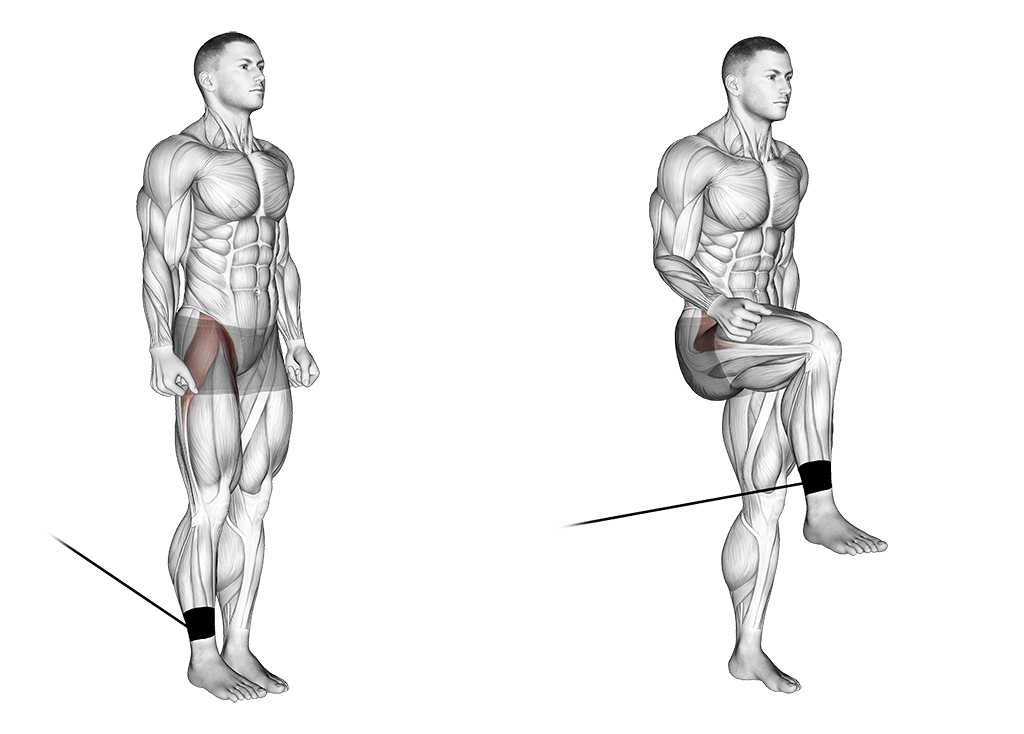Exercise Anatomy
Hip Joint Flexion
Hip Joint Flexion is a foundational movement that plays a crucial role in various daily activities and exercises. This simple yet effective motion involves bending the hip joint, bringing the thigh toward the torso. Engaging in Hip Joint Flexion helps enhance flexibility, improves mobility, and targets muscles like the hip flexors. Whether you're an athlete looking to optimize performance or someone aiming for better functional movement, incorporating Hip Joint Flexion into your routine is a key step towards overall lower body health and vitality.

Major Muscles and Actions Involved
Hip Joint Flexion is characterized by the bending of the hip joint, bringing the thigh closer to the torso. This movement primarily engages the hip flexor muscles, including the iliopsoas (composed of the psoas major and iliacus), as well as the rectus femoris. Hip Joint Flexion is essential for activities like walking, running, and bending forward, making it a key component of overall lower body mobility and functionality.

Sports Uses
Hip Joint Flexion proves to be directly beneficial for various sports activities that demand agility, explosive movements, and overall lower body mobility. Sprinters, involved in explosive bursts of speed, benefit from the increased flexibility and range of motion provided by Hip Joint Flexion. Martial artists, especially those practicing kicks and dynamic movements, find this exercise valuable for enhancing hip flexibility and agility. Additionally, gymnasts and dancers, who often require a wide range of motion in their routines, incorporate Hip Joint Flexion to improve hip flexibility and perform intricate maneuvers with precision. Integrating this exercise into training routines contributes to better overall lower body function and mobility, essential for success in a diverse range of sports.
Exercise Tips
- Technique: Execute Hip Joint Flexion with controlled movements, focusing on bringing the thigh toward the torso. Maintain a neutral spine and avoid excessive arching or rounding of the lower back.
- Range of Motion: Emphasize a full range of motion, ensuring the hip joint flexes to its maximum without causing discomfort or strain. Gradually increase flexibility over time with consistent practice.
- Amount of Weight Used: Since Hip Joint Flexion is primarily a bodyweight movement, there is usually no additional weight involved. Focus on controlled form and proper technique.
- Grip: The exercise typically does not involve a grip. Ensure stability through a secure and balanced stance or position depending on the variation of the movement.
- Variations: Explore variations like seated leg raises, hanging leg raises, or lying leg raises to diversify your training and target different aspects of hip flexion.
- Unique Muscle Involvement: Hip Joint Flexion primarily engages the hip flexors, including the iliopsoas and rectus femoris. These muscles play a vital role in hip mobility and leg movement.
- Breathing: Inhale as you prepare for the movement and exhale as you bring the thigh toward the torso. Maintain a controlled and rhythmic breathing pattern throughout the exercise to support overall stability and focus.
